My trees
It’s been about a year since my last tree update - here’s what’s been happening.
In summary, I’ve added three trees, lost one, made mistakes but slowly improved my basics. One of the key lessons of bonsai is that it’s easy to do too much: to be overeager with repotting, pruning, fertilizing, wiring, and nearly everything else. The key factor in bonsai is time. There’s no way to simulate age or quicken the natural progression of trees beyond what the sun and soil provides.
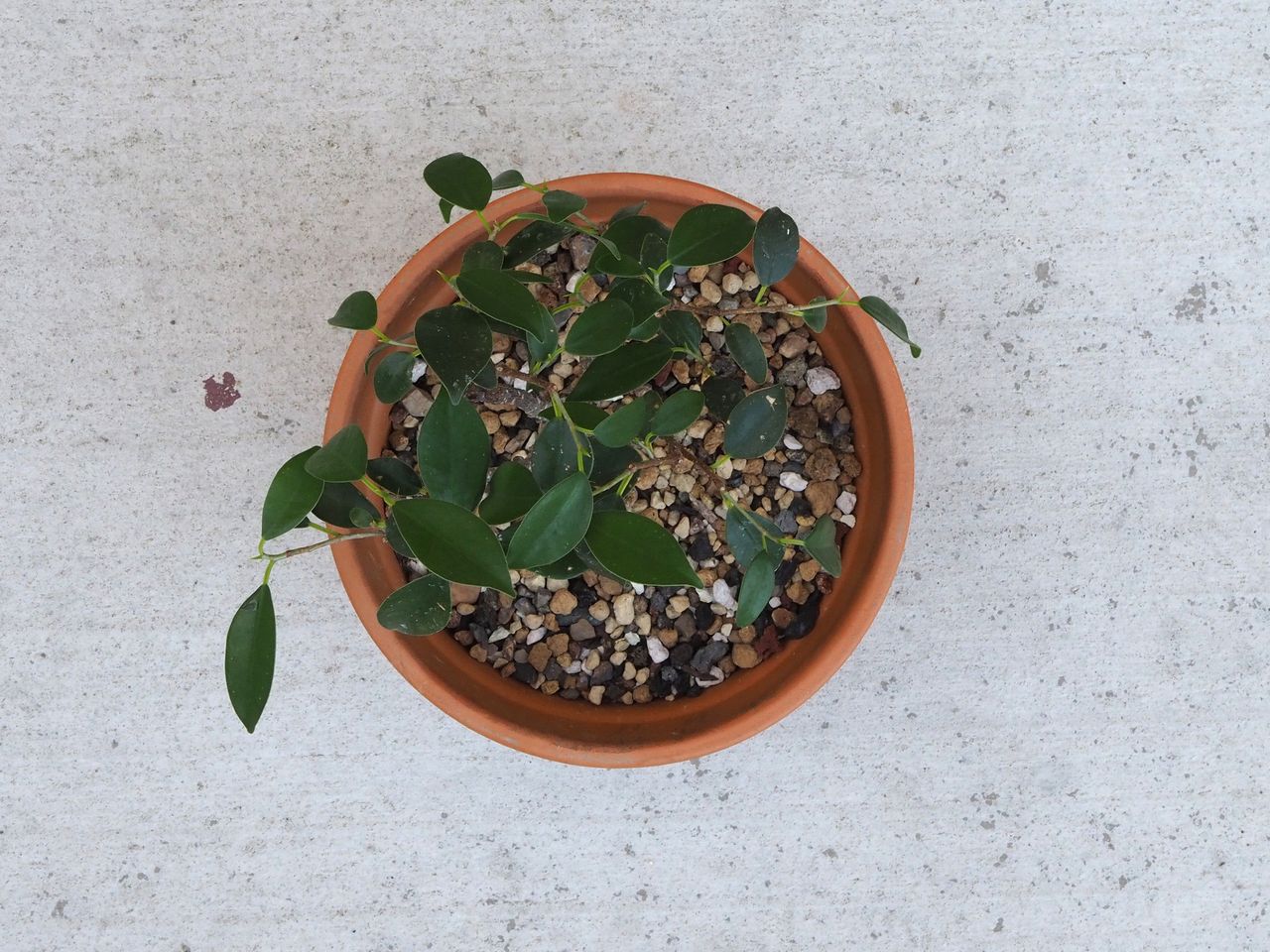
My Golden Gate Ficus is doing okay, about a year after being split into two parts and a year and a half after I originally bought it. Here’s what it looked like in May 2017, just after I had bought it.
I’ve repotted it much too often. I transported it bare-rooted into California, potted it, repotted it when that pot fell off my stoop, and when I split it in two I potted the halves in undersized bonsai pots.
I corrected for that error with terra-cotta plants from Sloat Gardens in San Francisco - which for city dwellers is one of the best suppliers. I’ve yet to find a good source for soil, though: Katsura has akadama, but I haven’t been very happy with its consistency and durability. I bought some ultra mix from American Bonsai which seems to drain much better, break down slower, and look better, too.
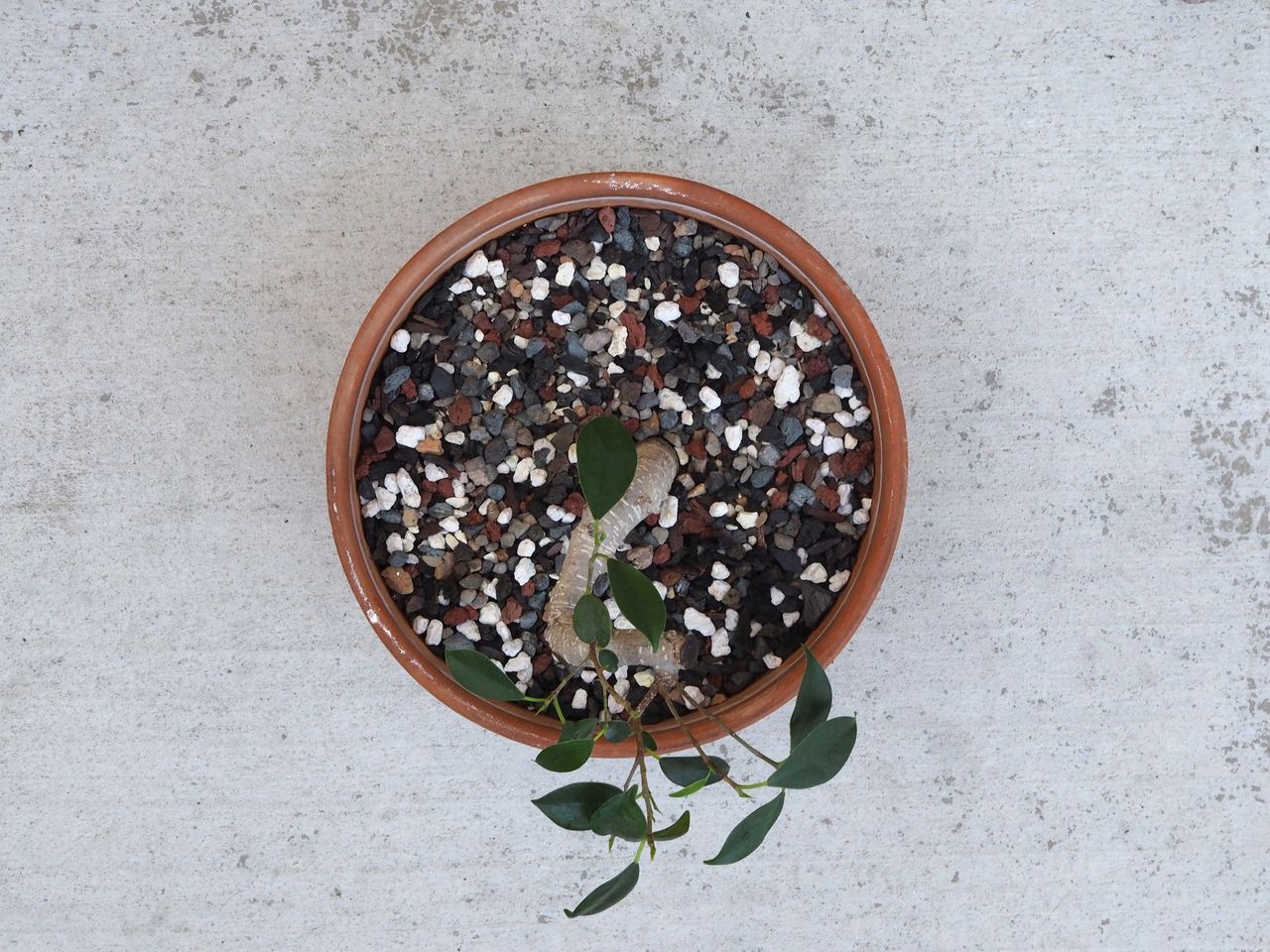
The top half of the ficus is doing much better than the lower half - which surprised me because the top started with zero roots. But, in the balance between roots and leaves, apparently a surplus of healthy leaves meant a lot more for survival than the bottom’s root structure. I’m pleased with the year’s change in both though: my biggest gripe with the tree originally was that it looked leggy and uneven, and now it’s becoming much more compact and dense.

I’ve really been enjoying this English Boxwood I got at Bongard’s Treescape Nursery early this year. Boxwood is mostly hedge material, but you can make some really compelling work with it in enough time, and the availability and price makes it a simple and cheap experiment. As you can see from the big scar in the middle, this was a taller piece that I chopped with a small saw. It takes a long time to lignify (become woody), but produces foliage faster than any of my other plants, likely because it has a massive root system. It also tends to grow branches like ⍦, so the majority of my pruning is to simplify that structure to ⌵ by pruning away the center, encouraging it to be a binary tree, not a trinary tree.
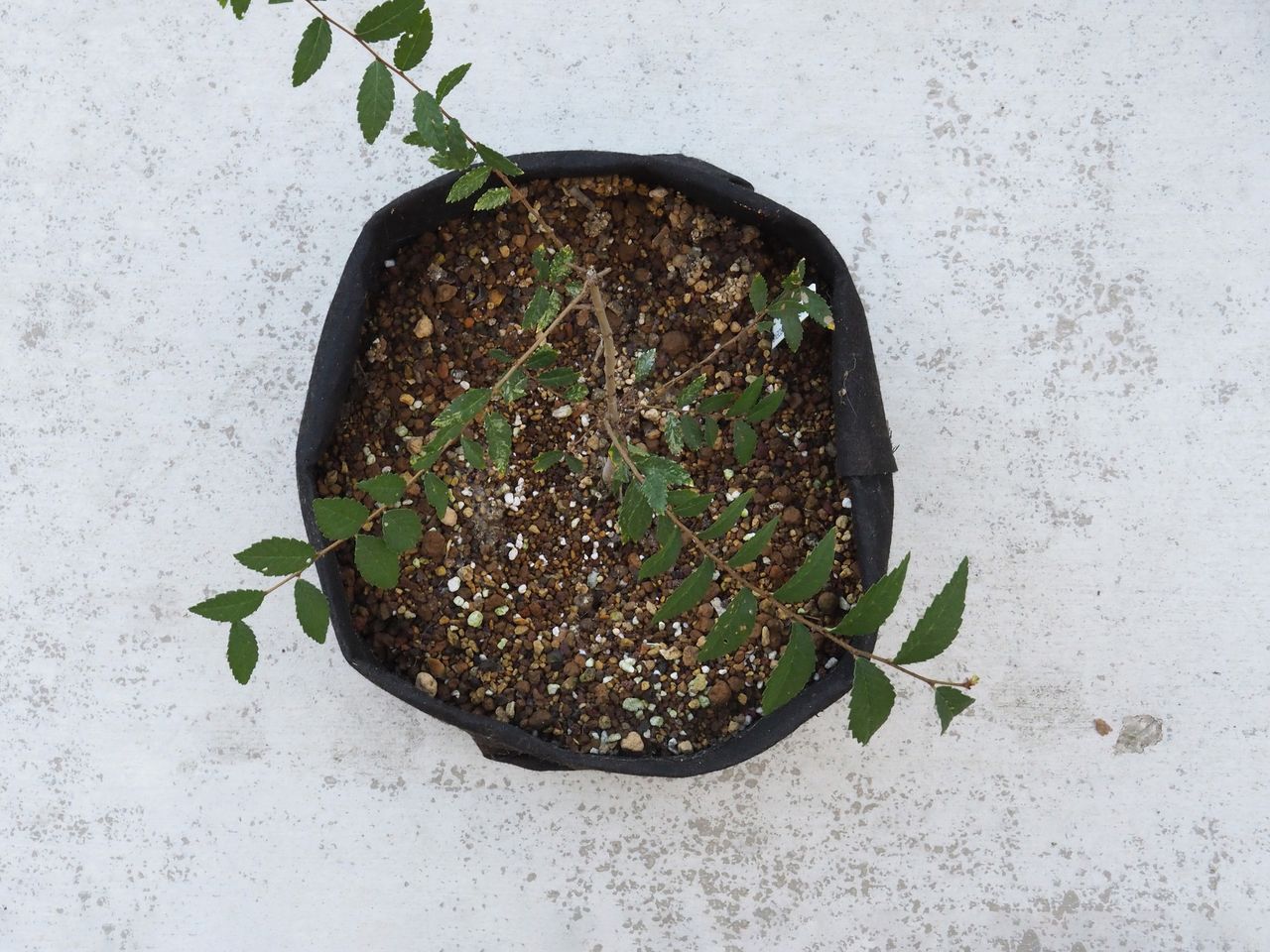
My Chinese Elm is recovering. It was another purchase from Sloat and was probably around two years old when I acquired it. In an experiment to hack my soil supply problem, I planted it in kitty litter, which is typically shale or diatomaceous earth-based, just like boutique bonsai soil. Unfortunately, in America that doesn’t work very well because litter is filled with caking additives. So I gave up on that tactic, cleaned the roots, and planted it in more traditional akadama soil from Katsura. After a long time when it looked entirely dead, the tree woke up and has been growing since.
This awkward mistake left it with a weird and asymmetric structure. At this stage, there’s no benefit to having a leggy and ragged-looking tree: my priority is simply growth, so that it develops a significant trunk. So I’m going to simply water it and keep the leaves and branches untouched, possibly for years.
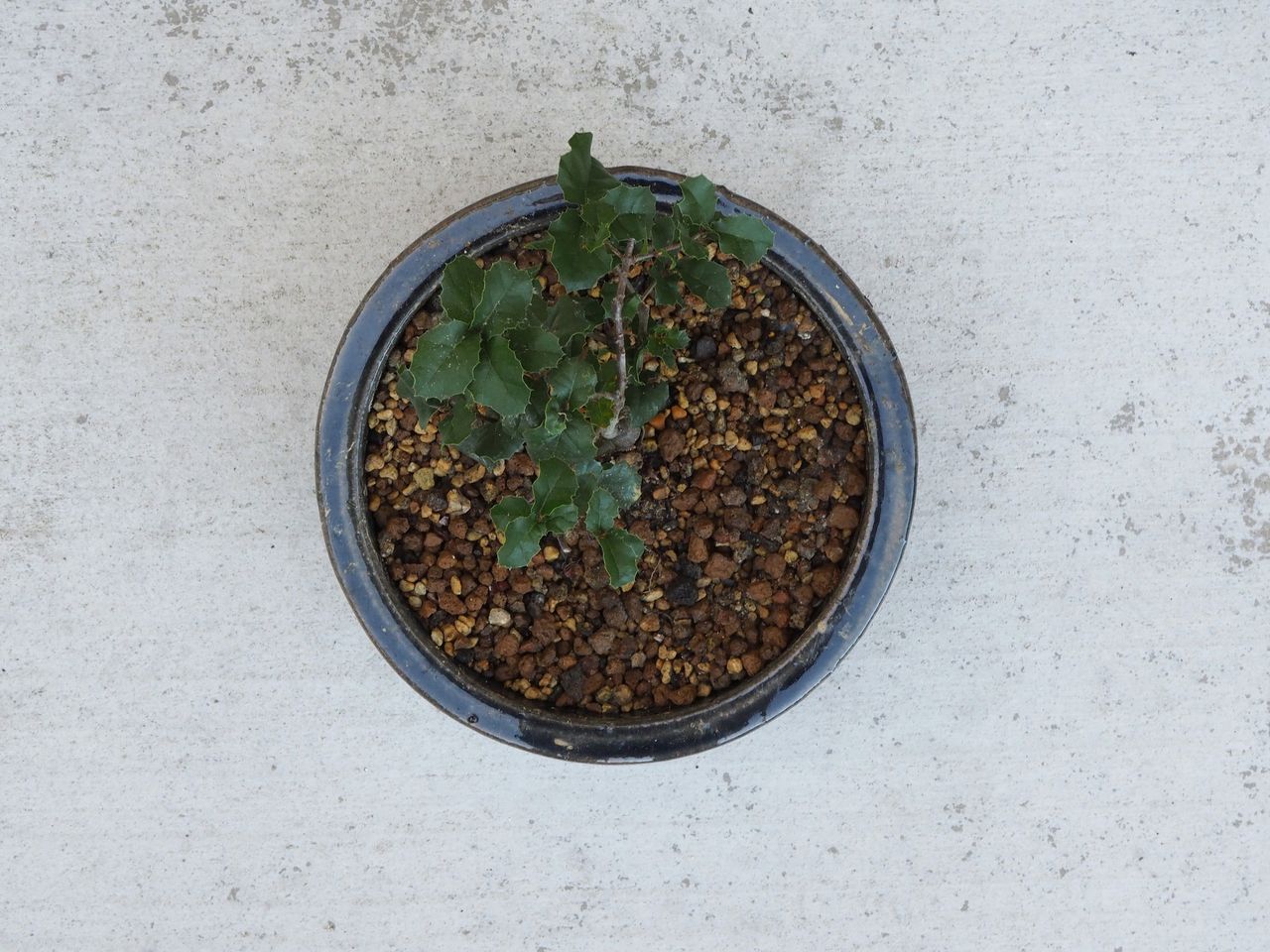
This California Live Oak is the newest in the group. It’s a little worrying that the leaves are hard, but I think that’s normal for the type, and it looks pretty cool. At this stage I’m trying to be hands-off and just water on a good schedule - I think about once a week, depending on how well this container and soil will drain.
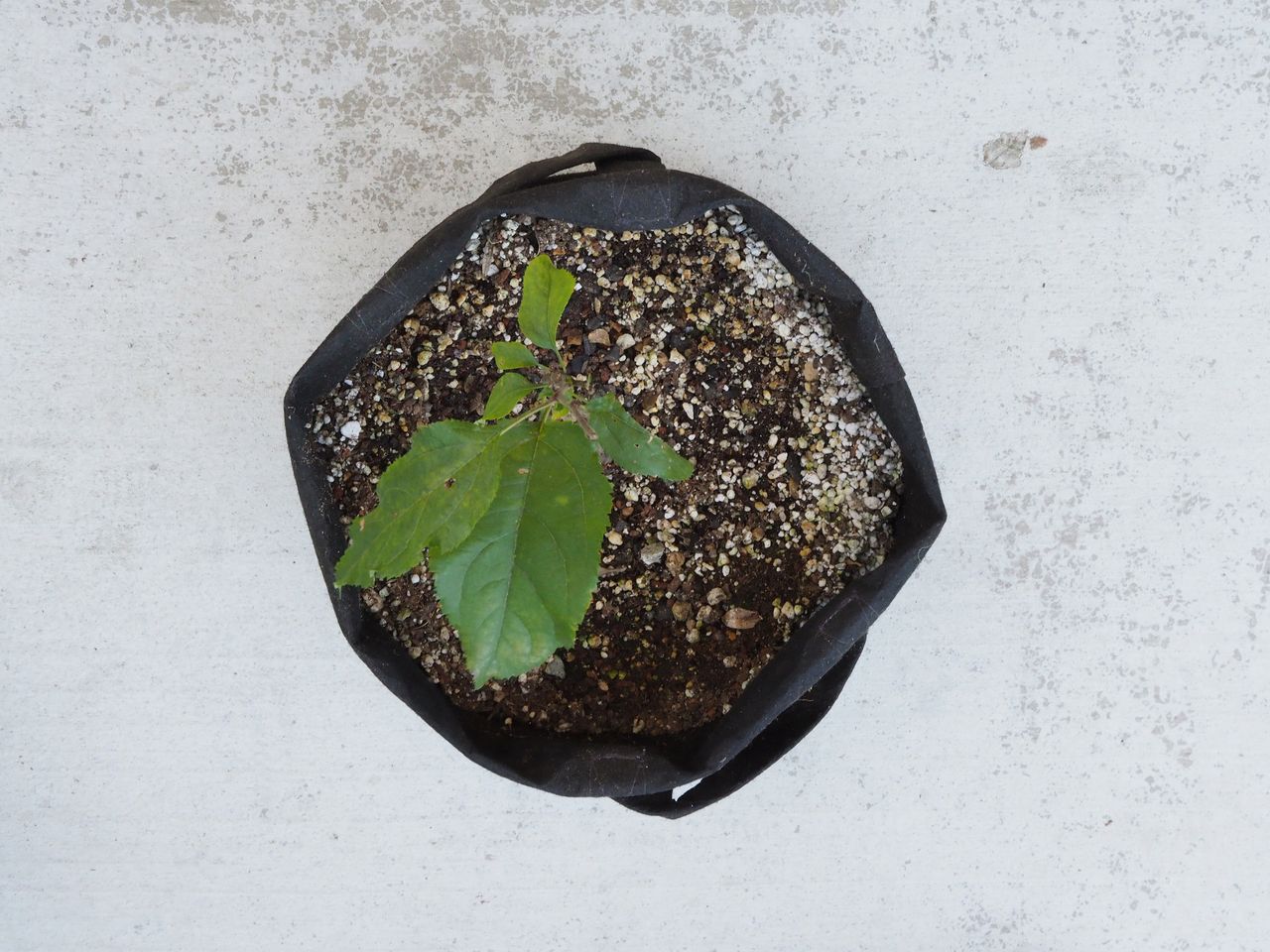
My apple tree is growing goofy, enormous leaves but putting out pretty good growth. I enthusiastically over-pruned it early in its life, and, like the Elm, transported it bare-rooted into California, so it also has kind of an odd structure. But what was once a weak, bending stem is now developing bark and wood, and I haven’t moved it from its very large container, so I hope it is gaining vigor.
My pieris japonica gave up the ghost a few months ago - it’s the only tree that I’ve lost so far. And even then, I wasn’t too worried about its loss, since I knew the species could be tricky for container growing and I had deprioritized its soil and sunlight.
At this point, I’m trying to get all of my trees to simply be strong and fast-growing, with good root systems. I’ve learned from this year that it’s useful to limit any kind of radical work on trees, and that, as the boxwood demonstrates, vigorous growth is the best tool you can have for styling. I think this number of trees will stay the same for a bit, and if I ever find an apartment with better direct sun, I might treat myself with a specimen tree from Katsura.